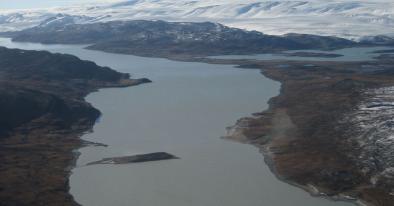Science Source
Decreasing cloud cover drives the recent mass loss on the Greenland Ice Sheet
- States that the Greenland Ice Sheet (GrIS) has been losing mass at an accelerating rate since the mid-1990s
- States that this has been due to both increased ice discharge into the ocean and melting at the surface, with the latter being the dominant contribution
- States that this change in state has been attributed to rising temperatures and a decrease in surface albedo
- Shows, using satellite data and climate model output, that the abrupt reduction in surface mass balance since about 1995 can be attributed largely to a coincident trend of decreasing summer cloud cover enhancing the melt-albedo feedback
- Satellite observations show that, from 1995 to 2009, summer cloud cover decreased by 0.9 ± 0.3% per year
- Model output indicates that the GrIS summer melt increases by 27 ± 13 gigatons (Gt) per percent reduction in summer cloud cover, principally because of the impact of increased shortwave radiation over the low albedo ablation zone
- Finds that the observed reduction in cloud cover is strongly correlated with a state shift in the North Atlantic Oscillation promoting anticyclonic conditions in summer and suggests that the enhanced surface mass loss from the GrIS is driven by synoptic-scale changes in Arctic-wide atmospheric circulation
Related Content
Science Source
| Geophysical Research Letters
Melting glaciers stimulate large summer phytoplankton blooms in southwest Greenland waters
Kevin R. Arrigo, Gert L. van Dijken, Renato M. Castelao et al
Science Source
| Geophysical Research Letters
Ice Core Records of West Greenland Melt and Climate Forcing
K. A. Graeter, E. C. Osterberg, D. G. Ferris et al
Science Source
| Science Advances
Abrupt shift in the observed runoff from the southwestern Greenland ice sheet
Andreas P. Ahlstrøm, Dorthe Petersen, Peter L. Langen et al
Headline

Dec 15, 2017 | Vox
Greenland's ice sheet is driving global sea level rise. One section is melting 80% faster.


